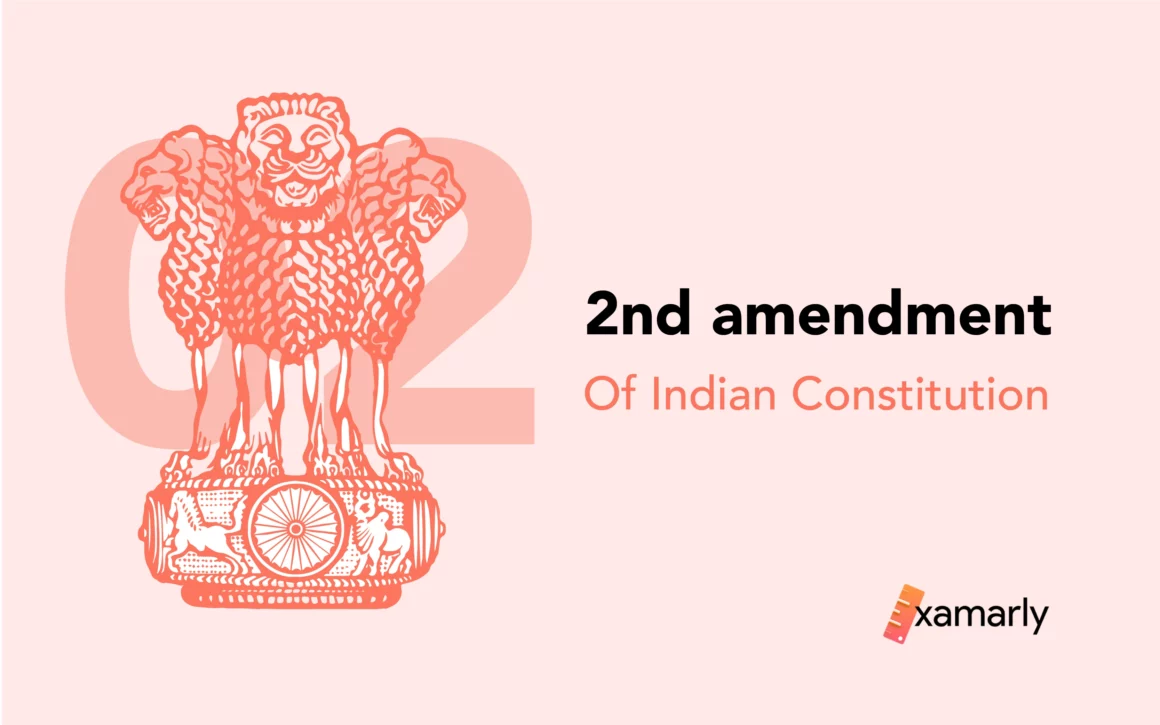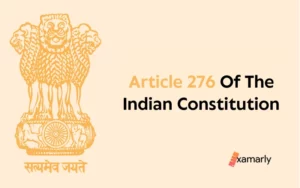2nd amendment of Indian Constitution was brought up to amend the original Article 81(1) (b), which dealt with the representation of States in Parliament. According to Article 81(1)(b), the number of representatives to be assigned to every parliamentary constituency must be chosen in a way that ensures the upper population limit for one representative in the lower house of Parliament.
This article speaks about the 2nd amendment of Indian Constitution. This article is worth reading for the UPSC Exam preparation.
2nd Amendment Of Indian Constitution
On June 18, 1952, the Constitution (Second Amendment) Bill, 1952, also known as The Constitution (Second Amendment) Act, 1952 was introduced in the Lok Sabha. C.C. Biswas, who was the minister of law and minorities at the time, made the announcement. The purpose of the measure was to change Article 81 to reduce the maximum population threshold for a parliamentary seat.
Statement Of Object And Reasons
Article 81(1) (a) sets a boundary of 500 elected representatives in the Lok Sabha. According to Article 81(1), (b)The States must be split, clustered or organized into territorial constituents. The number and allocation of members to each constituency shall ensure that there are no less than one representative for every 750,000 population and no more than one representative for every 500,000.
Presently, the House of the People has allocated seats to Part A and the B States on the basis of one representative for every 7.2 million people. In all cases, the census figures are higher, given the 500-member limit in article 81(1)(a). It is impossible to increase the number of seats allotted for these States. As per the 1951 census, it is necessary to decrease the representation from one member per 7.2 lakh population to one member per 7.5 lakh population.
A delimitation exercise was conducted and even the census 1951 was also out. In all cases, the figures of the census were higher. Estimates of the population did not match the need of the scenario. Thus given the 500-member limit in article 81(1)(a), it was impossible to increase the number of seats allotted for these States.
Thus, article 81(1)(b), which sets limits for constituencies, was amended to relax those limits. The numbers listed in article 81(1)(b) of the Constitution were replaced with 850,000 and 650,000, respectively.
So we find that only if the constitution makers had estimated the population trend in the country there would have been no need for this amendment. The absolute limit had to be eliminated. Even today there are debates over increasing the seats in the Lok Sabha to match the population growth that has taken place over the period.
Important Provisions
The second amendment of Indian Constitution has changed the following provisions of Article 81, which dealt with the composition of the House of the People:
Article 81(1)(a) Not more than 500 members are chosen by direct election in the House of People.
Article 81(1)(b) there shall be not less than one member for every 750,000 of the population and not more than one member for every 500,000 of the population.
Corresponding changes were effectuated in Article 170(2) relating to the State Legislatures.
Need
The original Constitution has a maximum permissible number of MPs in the Lower house of Parliament is 500. It provided that one member of the House could represent even more than 7,50,000 persons thus making it possible to maintain the total strength of Lok Sabha constant at 500. This formula became unsuitable with the population trends in the country. The Amending Act, therefore, dropped the minimum requirement of one member for every 7.5 lakhs of the population in Art. 81(1)(b).
Article 81(1) (b) maximum is 7.5 lakhs, as was previously stated. The population of a specific number of constituencies will obviously surpass that number, even if 750,000 is the average population for a Parliamentary constituency in any State.
Also Read: Powers And Functions Of Lok Sabha and Rajya Sabha
Conclusion
In accordance with the provisions of the bill, a Delimitation Commission is established to modify the representations in the House of the People as well as in the State Legislative Assemblies based on the 1951 census population.
Therefore, article 81(1)(b), which sets limits for constituencies, should be amended to relax those limits. This will avoid any constitutional irregularity in the delimitation of constituencies necessary for the intent of readjusting the representation in the House of the People, by altering the numbers listed in article 81(1)(b) of the Constitution with 850,000 and 650,000, respectively.
FAQs
When Did The Bill For The 2nd Amendment Of The Constitution Has Brought Into Parliament?
In the year 1952, the bill of 2nd amendment of Indian Connstitution has been tabled into the Parliament.
When Did The 2nd Amendment Act Come Into Effect?
Rajendra Prasad gave assent to this bill on 1 May 1953 and then after it’s came into force.






